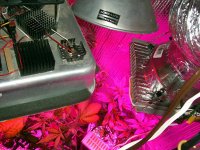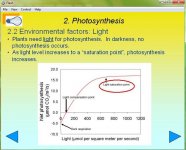As the capitate glands age and ripen, they turn cloudy.
The UV b and c that used to sail right through them now contributes to their rapid darkening.
The IR is also occluded and so, heats the glands, which also hastens their degradation.
LEDs produce 0 UV and almost 0 radiated IR.
I used them to confirm my theories on UV and gland ripening.
As a result of my results I now have a UV filtering roof on my greenhouse.
The thread was "Calling out to Weezard for LED advice"
By "Crunchy pants" aka "Dreaded Hermie"
Googles right up.
Damn,,,long ass read there but got through it... I see a lot of that was posted a few years back.
Onward and upward.....let's look toward the future of the field we like so much and see what we can do...





